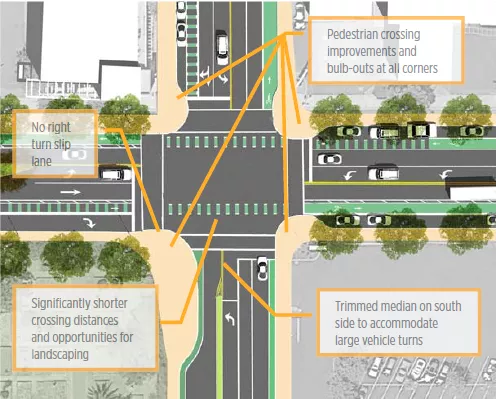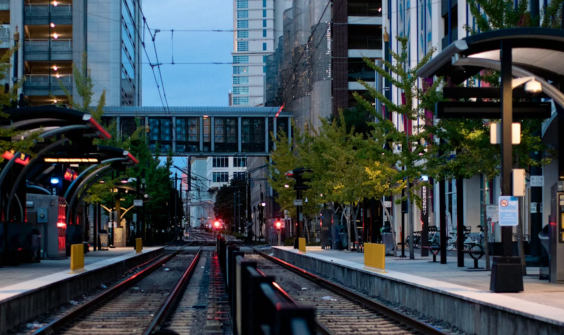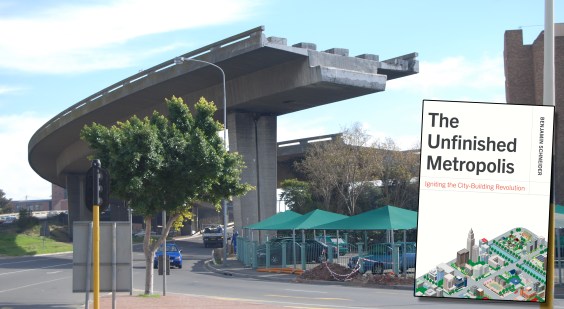Note: GJEL Accident Attorneys regularly sponsors coverage on Streetsblog San Francisco and Streetsblog California. Unless noted in the story, GJEL Accident Attorneys is not consulted for the content or editorial direction of the sponsored content.
Caltrans just awarded $40.5 million in Sustainable Communities grants for projects "that reduce transportation-related greenhouse gas emissions and the impacts of climate change." Also last week, the California Transportation Commission (CTC) approved the last part of the current Active Transportation Program (ATP) cycle, awarding $175 million for 59 projects in ten regions.
The Sustainable Communities grants receives money from S.B. 1, the gas tax increase passed last year, and a combination of other state and federal funds. They are aimed at helping cities, counties, and transit agencies plan for climate change adaptation, active transportation, forming strategic partnerships, and position themselves for receiving future infrastructure grants.
The Active Transportation Program grants [PDF] were chosen by regional governments in the Bay Area, Sacramento, Southern California, San Diego, Fresno, Kern, San Joaquin, Stanislaus, Tahoe, and Tulare. All of those regions, except for Kern, Stanislaus, and San Joaquin, used their own CTC-approved scoring process to choose the projects in their regions. The last three accepted the state's recommendations for their regions, based on a previous round of applications.
These funds are the last undecided portion of the $445 million, 4-year 2019 ATP cycle. The other portions - the statewide competition and the small urban and rural portion - have already been awarded. There is an addition $8 million going to the California Conservation Corps.
A little over half of the amount ($95.6 million) will go to forty Safe Routes to Schools projects. In addition, CTC staff estimates that 94 percent of the investments--53 of the projects--will benefit a disadvantaged community in some way.
As clearly shown by the Bay Area's submission (available here as a PDF), there are, as always, far more projects looking for funding than there is funding available. The Metropolitan Transportation Commission created a "contingency list" of worthy projects that were not nominated but would get funding if it becomes available, including Berkeley's Milvia Street Bikeway, the East Bay Greenway near the San Leandro BART, and improvements to San Francisco's notorious "hairball" intersection.
Highlights of the ATP projects selected include:
- Fresno Council of Governments, FresnoCOG: ($4.7 million for 9 projects)Signals, pedestrian countdowns, sidewalks, curb ramps, pedestrian and bike paths around schools in the county, including a cycle track and pedestrian scramble at Maple Avenue.
- KernCOG: ($4.3 million for 1 project)Kern County nominated only a six-mile Class I bike path along the Friant-Kern canal which will connect to an existing 32-mile multi-use path and providing regional connectivity.
- San Francisco Bay Area, MTC: ($36.6 million for 6 projects)In San Francisco, the 6th Street pedestrian safety project will include sidewalk widening, upgraded traffic signals, improved signal timing, reduced crossing distances, new pedestrian-scale lighting, and landscaping/street furniture upgrades.The SMART railway path gap closure in Sonoma - ATP grants only cover part of the project, and therefore will focus on two segments that will bring the most benefits.In San Jose, a Class IV protected bike lane, new sidewalks, and curb extensions will be added along Willow-Keyes. This project got only partial funding from the ATP ($12.9 million out of $16.5m needed), but local and county sales taxes will make up the difference.
- Sacramento, SACOG: ($11.6 million for 7 projects)The Broadway corridor will receive a road diet, bike facilities, and pedestrian improvements, closing a critical gap in the local bike network.In Yuba, the Cedar Lane Elementary School safety project will include traffic calming as well as bike and pedestrian education for parents and students.
- San Diego, SANDAG: ($15.8 million for 4 projects)The University Bikeway Project will include a road diet, removal of free-right slip lanes, separated bike lanes, buffered bike lanes, protected intersections, signal-protected crossings, new and enhanced pedestrian crossings, curb extensions, and speed cushions.The Escondido Creek Trail Transit Center Bicycle Path will see improvements along 1.6 miles of Class I bike trail, closing several bike/pedestrian gaps and adding lighting, pedestrian signals, crosswalks, and ramps.
- San Joaquin County, SJCOG: ($3.5 million for 2 projects)The City of Stockton will build curbs, gutters, sidewalks, and bulb-outs around five school sites.
- Southern California Association of Governments, SCAG: ($92.5 million for 25 projects)The LA River Bike and Pedestrian path will see several gaps closed.
- Ontario will complete a pedestrian network near three schools, including closing gaps in the sidewalks and adding lighting, crosswalks, shade trees.The Broadway-Manchester Active Transportation Equity Project in L.A. will build a separated, Class IV cycle track, adding crosswalks, a center median pedestrian refuge island, sidewalk improvements, curb extensions, and pedestrian signals.
- Stanislaus, StanCOG: ($2.5 million for 2 projects)The Bret Harte Elementary School Connectivity Project will bring new sidewalks, Class III bicycle routes, and bike racks.
- Tahoe: ($744,000 for 1 project)A Class I bike trail will parallel Lake Tahoe Boulevard, allowing commuters and recreational users to travel between the city and county areas without ever leaving a protected bikeway. The project closes a trail gap, completes a safe route to the South Tahoe High School, and connects to a transit center and shopping areas.
- Tulare: ($2.3 million for 2 projects)The City of Woodlake will add curbs, sidewalks, ramps, lighting, and Class II bike lanes along North Valencia.
The complete list of regional ATP projects can be found here [PDF].
Meanwhile, the Sustainable Communities planning grants are meant to help cities and regions position themselves for future grants and projects that include resilience, adaptation, emergency preparedness, and sustainable transportation. They range in size from less than $100,000 to almost $1 million, with most falling between $200,000 and $500,000.
Highlights include:
- A feasibility study of the Santa Clara Valley Bicycle Superhighway.
- Multimodal or active transportation plans in Lompoc, Sand City, San Benito, Santa Cruz, Artesia, San Fernando, East San Gabriel Valley, Placer and Sacramento counties, San Jose, and Contra Costa
- A feasibility study for the Lodi Greenline multiuse connector, and for the city of San Pablo to study bike and pedestrian corridor needs.
- Transit studies for BART and Contra Costa.
- Several baseline studies on Vehicle Miles Traveled, a measure for environmental planning of development projects and for planning reductions in vehicle greenhouse gas emissions. Grants went to Mendocino, Lake County, Southern California Association of Governments.
The complete list of Sustainable Communities grants can be found here.






